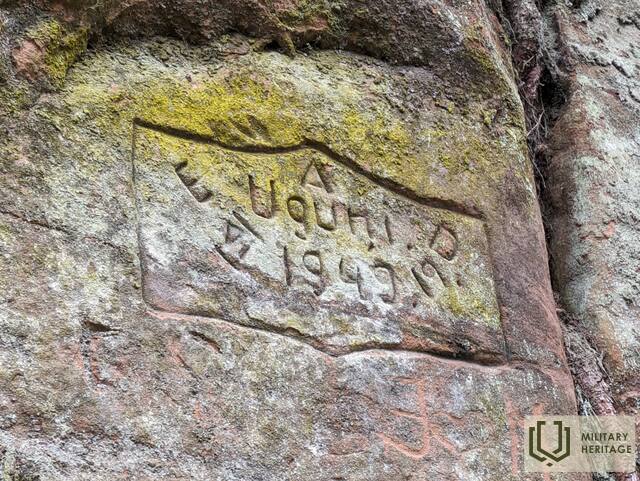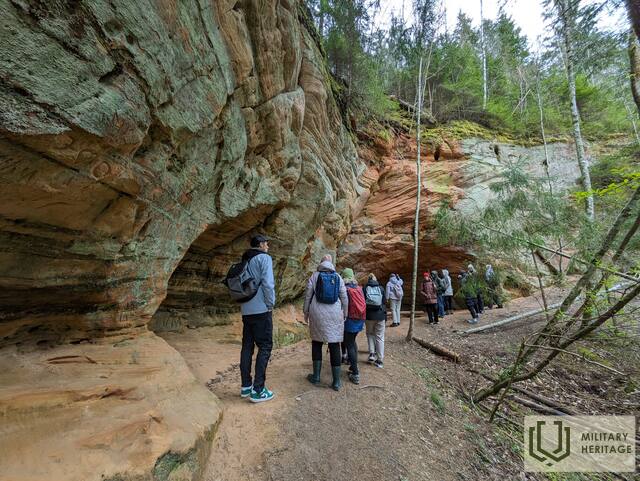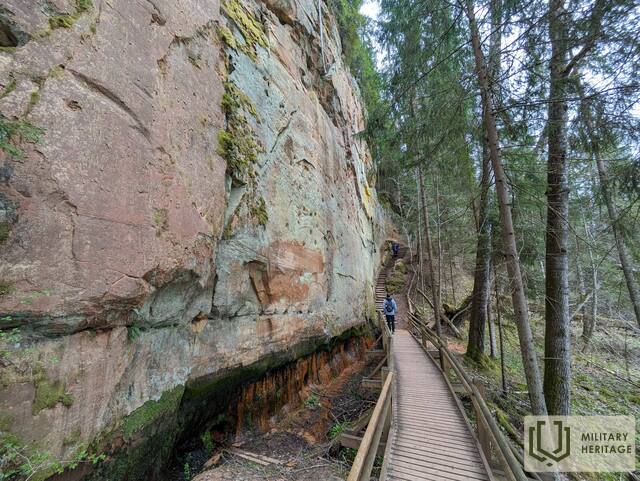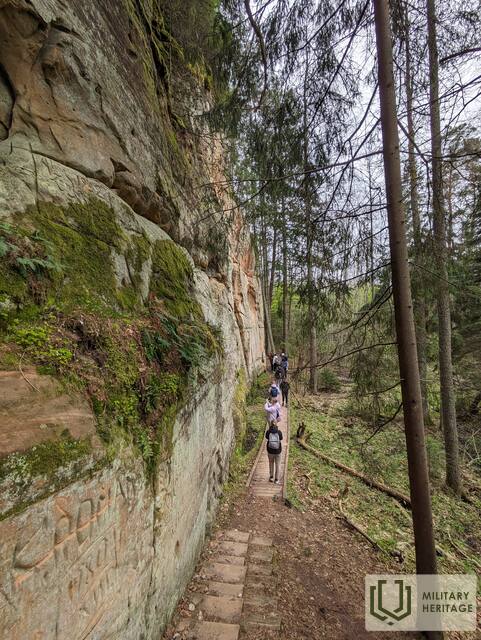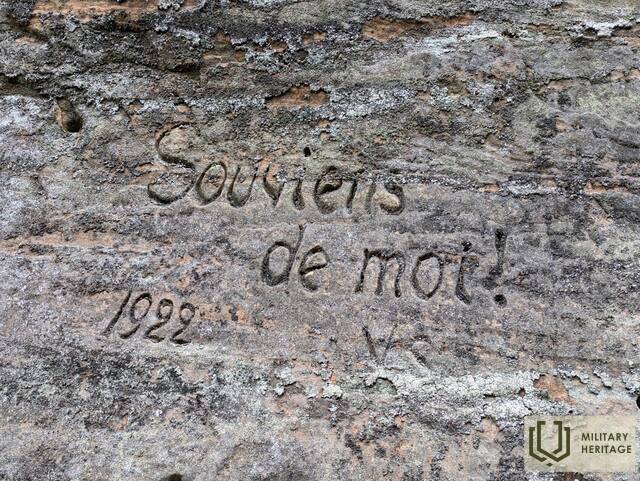Historical evidence in the Līči – Laņģi cliffs
Fragments from local history enthusiast Aivars Viļnis's story about history and its evidence found in Lode and Liepa, in what is now Cēsis municipality.
"Red clay soil, bricks, 400 million-year-old armadillos, a rock city whose sandstone walls reveal the entire history of Latvia, overgrown house foundations - in a place where the pre-war Latvian elite once gathered. And all this in Liepa parish, Priekuļi district, behind the unattractive Soviet-era block houses that nature lovers, turning up their noses at, walk past."
(..) Aivars knows almost everything about “Lode”, bricks and Liepa. He was born in Liepa, and his entire family history is connected with the “Lode” factory, where he applied for a job in 1977, just after graduating from high school, and is still working. Like his father, Aivars continues to research the history of the parish, focusing especially on the history of brickmaking, which has become the greatest passion of his life.
(..) In 1973, when the Gauja National Park was established, not only the kilometer-long sandstone wall [Līči – Laņģi Cliffs] came under state protection, but also the inscriptions on it. (..)
An alternative history is revealed by scratches on the rock walls: some are clear, others are impossible to decipher. (..)
“Krylov 1942.” Aivars knows this much about this inscription. “During the German occupation, Russian prisoners of war were thrown into peasant houses, so I realized that one of them had scratched the inscription. I thought, well, the regime wasn’t that harsh after all, if the prisoners could go for a walk. Later I learned that there was a prison camp in “Lejas Lodēs” at that time. A nobleman named Krylovs came from a Georgian noble family and worked for the Germans as a translator. He was privileged and was friends with the owner of “Kalna Lodēs”. When a German officer was shot in Liepā in 1942, the prison camp was moved to Valka.” (..) “1909. year K. Maizītis.” Aivars suggests that in his youth, the Cavalier of the Order of Lāčplēsis, Kārlis Maizītis, who fell in the Battle of Pinkie in 1919 and was buried in the Liepa cemetery, left an autograph here.
(..) One inscription seems particularly significant to Aivars Vilnis. In neat handwriting, “Uguņi” is written in large letters and the date next to it: June 19, 1949. One can sense that, unlike the others, this one was not made just like that. “March was the time of evacuation, and June was the time of graduation. There is no such house name or surname on this side. I admit that after the war “Uguņi” was a group of militantly-minded young people. This, of course, is just a fantasy on the topic, because there is no evidence.”
(..) It is raining heavily, we get stuck in the clay, but we don't give up - slowly lifting our feet stuck with clay, we wade on. "All the world's paleontologists know the "Lode" clay quarry," begins Aivars. In the spring of 1970, geologist Visvaldis Kuršs discovered fossils of Devonian fish in the clay quarry. It was a whole cemetery. The unique thing about the find was that for the first time in the history of paleontology, whole fish fossils were found, not just fragments. The find revolutionized science, because it was proven that the armored fish species - Asterolepis ornata - looked different than previously thought, namely that it had a longer tail. However, it all started on a spring afternoon in 1970, when Anna Babre was standing in the quarry and counting the loads. The work was already nearing completion when Anna noticed that a flat plane was forming in one place, where various bones were visible. It was she, crossing her arms above her head, who stopped the bulldozers and went to the boss to tell him about the discovery. The excavations continued under the leadership of geologist Ľubova Ľarska. Some of the Devonian fish fossils found in the “Lode” quarry can be viewed at the Latvian Museum of Natural History.”
Hauka, E. Let's read the armadillo or searching for lost time in the cliffs of Līču-Lģi [online]. [Accessed 19.04.2024]. Available: https://www.tvnet.lv/6973960/ejam-lasit-brunuzivis-jeb-zuduso-laiku-meklejot-licu-langu-klintis




